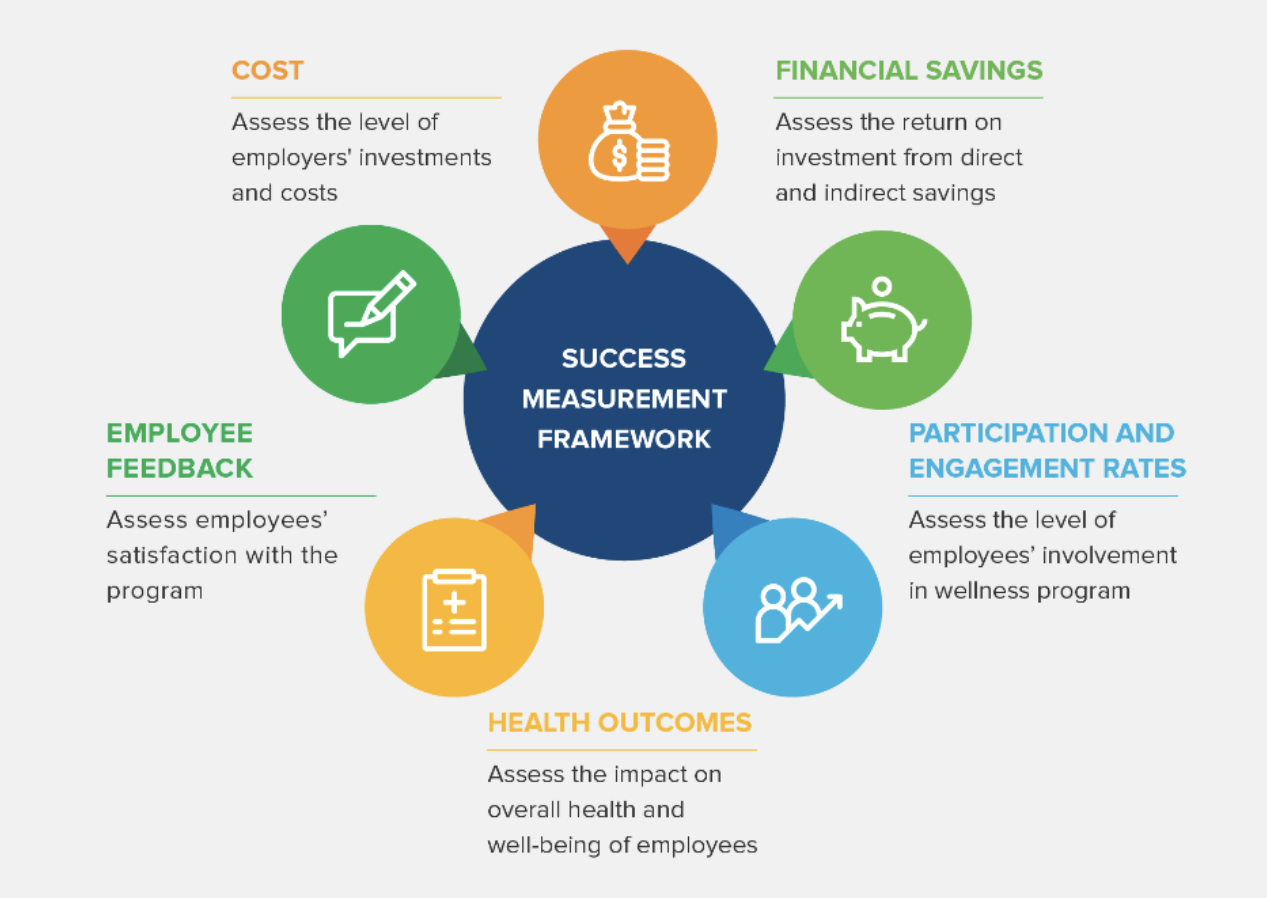In order to justify an investment into comprehensive and holistic wellness programs, employers often lack the data or measurable results that make it easy to quantify a program’s real value. With this in mind, Cigna conducted a report with the goal of providing practical guidance and advice to businesses by highlighting the direct economic benefits that are tied to well-developed employee wellness programs. Researchers analyzed over 100 peer-reviewed academic articles and research studies to extract key insights and illuminate what wellness program strategies work the best for organizations of all sizes, making this report the largest systematic review of workplace wellness interventions and their impacts.
Promisingly, the findings show that wellness programs can yield high returns even with limited investment. For the greatest impact, employers need focused solutions that suit the unique needs of their workforce. Proper design and execution of a program is the key to increasing productivity, lowering healthcare costs, and reducing absenteeism.
- Develop a unique program that meets employees’ specific needs.The findings show that programs that targeted specific loss-drivers—including case management programs to reduce absenteeism, disease management to reduce healthcare claims and costs, and lifestyle programs to improve physical health—were the most successful. Employers should look at what specific problems or concerns their workforce struggles with in order to identify what their wellness program needs to address the most. This data can come from health screenings, self-reported assessments, demographics, local issues, and input from managers. While this may sound like obvious advice, most employers don’t recognize that a “cookie cutter,” one-size-fits-all plan from a wellness vendor might be too broad or irrelevant for their employees. A program might sound wonderful and produce truly great results for many other companies, but that shouldn’t distract employers from the fact that it may not meet their own workforce’s needs.
- Mental health support may be the most valuable investment.Results showed that mental health interventions yield the best return on investment (ROI) for employers—these include work-life balance training, counseling, and meditation classes. Of these interventions, those that addressed stress management and well-being support produced the highest returns. In fact, one program reviewed by Cigna showed a sixty-fold return on their initial investment. Mental health benefits continue to rise in demand from employees, and companies should take note that these offerings can produce amazing results for productivity and employee wellness.
- Leadership support is critical to engagement.Managers that visibly support and participate in programs are more likely to drive up employee participation. Specifically, programs with middle management support averaged an ROI of ten times their initial investments. Employers will want to involve middle management in the delivery of wellness interventions. These roles have a high amount of direct team management within most organizations; therefore, these managers can promote and motivate a large number of workers to engage with their wellness program. That engagement also leads to more success, as the report found that when engagement rates changed from just 75% to 92%, the ROI increased eleven-fold.
- Measure program success.Findings showed that employers often overlook the monitoring and evaluation of their wellness programs, and the data collected is typically too broad or fragmented. However, it is important to gauge a program’s impact in order to design the best plan for employees. The study identified five ways to best measure a program’s success: cost, financial savings, participation and engagement rates, health outcomes, and employee feedback. These parameters cover a range of program outcomes. While employers may need to select which measurements work best for them (based on data availability and resources), a special effort should be made to identify and maintain engagement rates.
Different Parameters For Measuring Program Success

“Wellness programs that are grounded in a solid understanding of how well-being issues manifest in a workplace can generate impressive returns,” Jason Sadler, President of Cigna International Markets, says. “The pandemic has shifted the way we work, and employee programs must adapt to employees’ changing needs. It is therefore critical that employers develop robust frameworks to ensure that all well-being interventions deliver the desired impact.”












